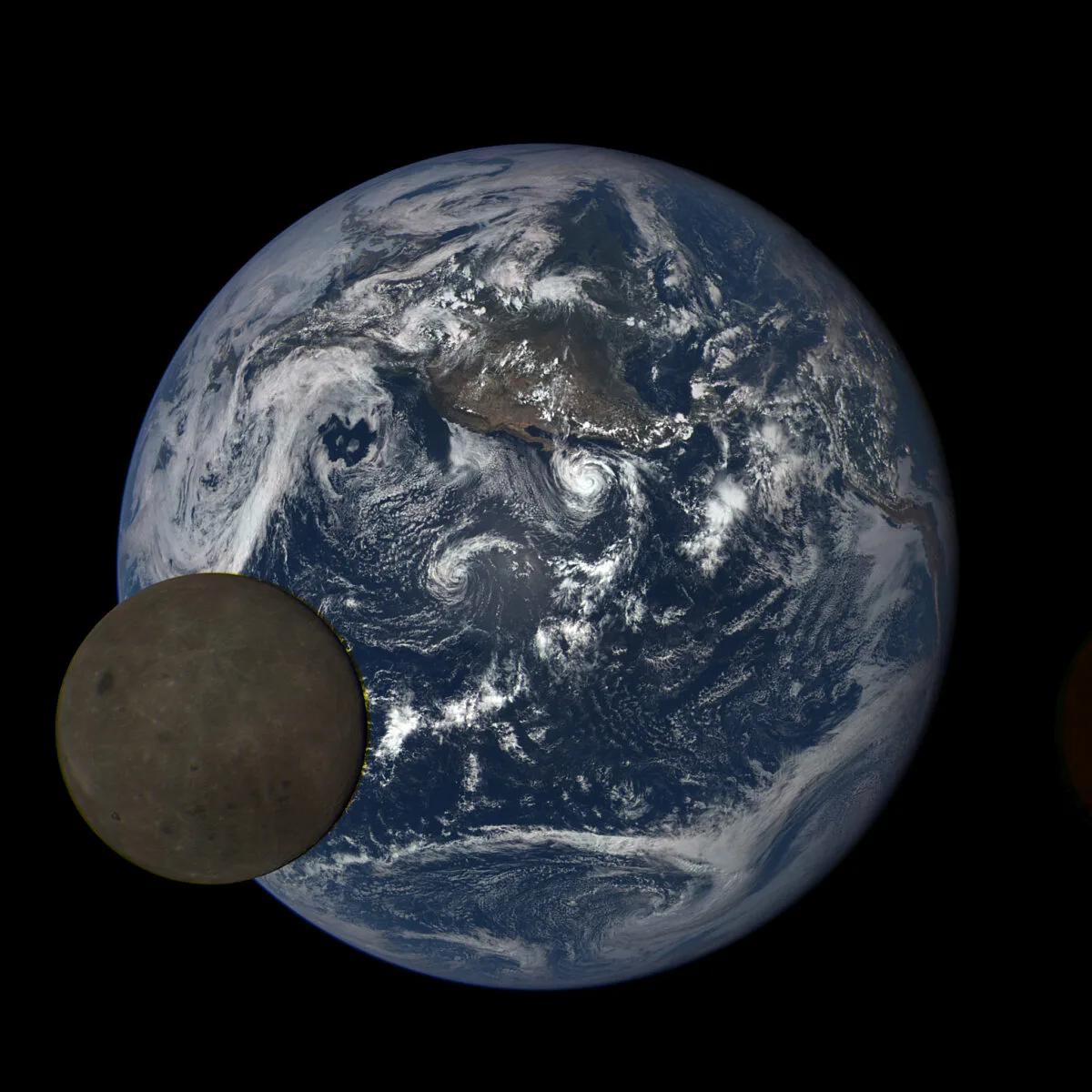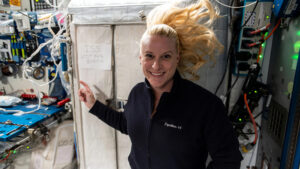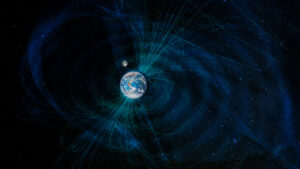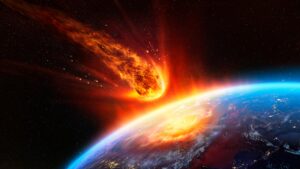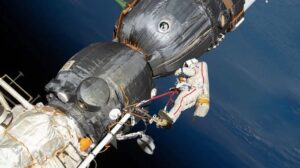On Tuesday, a strange bell-shaped casket floated gently down onto the plains of Inner Mongolia. It came from outer space and carried rocks from the far side of the Moon.
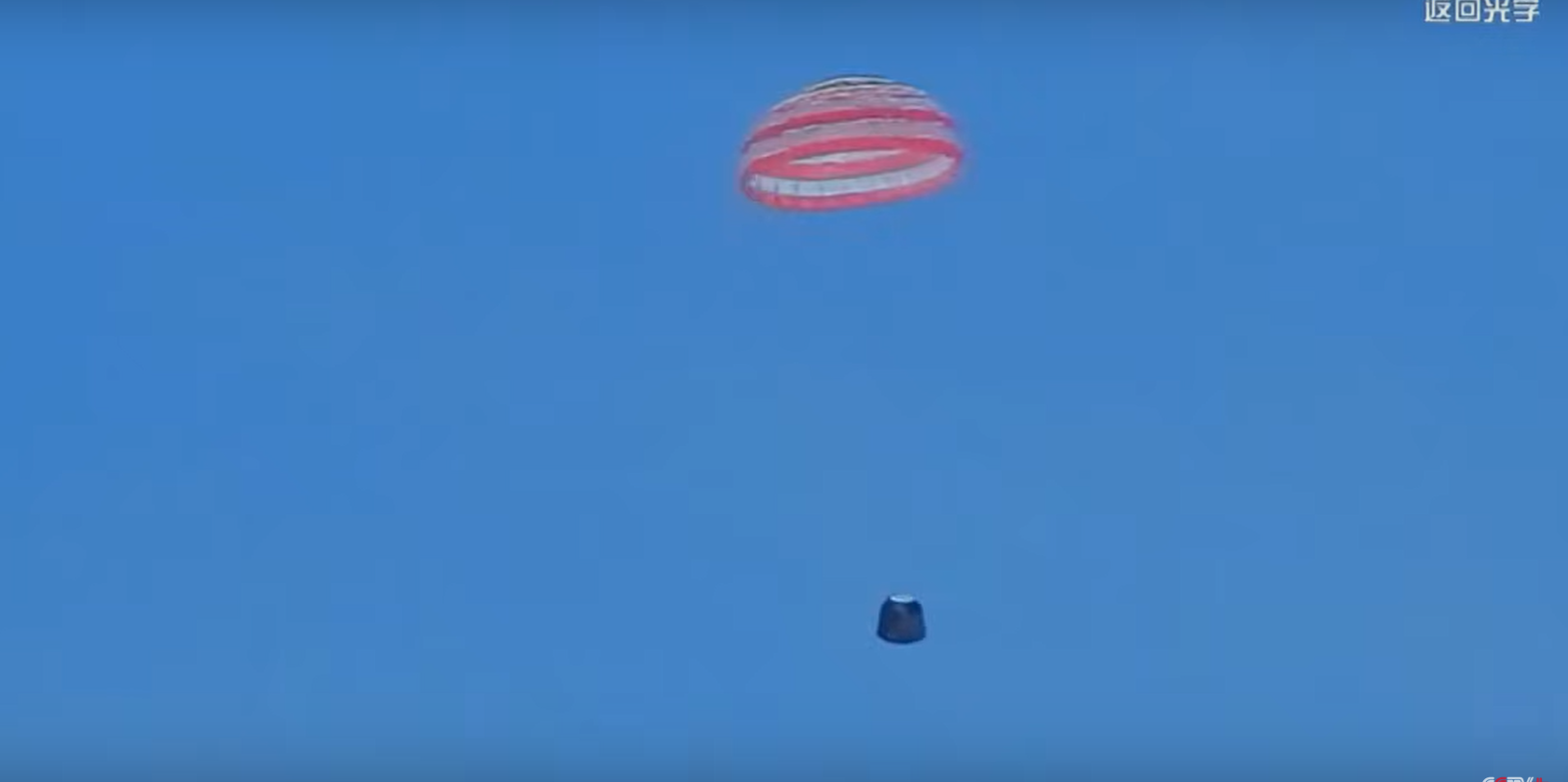
The capsule drifts down with its precious cargo. Photo: CCTV
The China National Space Administration successfully retrieved the payload, which their lunar probe Chang’e 6, named after the Chinese moon goddess, sent back to Earth in a return module.
The success of their five previous Chang’e probes highlights the progression of the Chinese Lunar Exploration Program from orbital satellites to sample return missions in just 13 years. But Chang’e 6 broke new ground. This is the first time in history that humans have collected rocks from the Moon’s “dark” side.
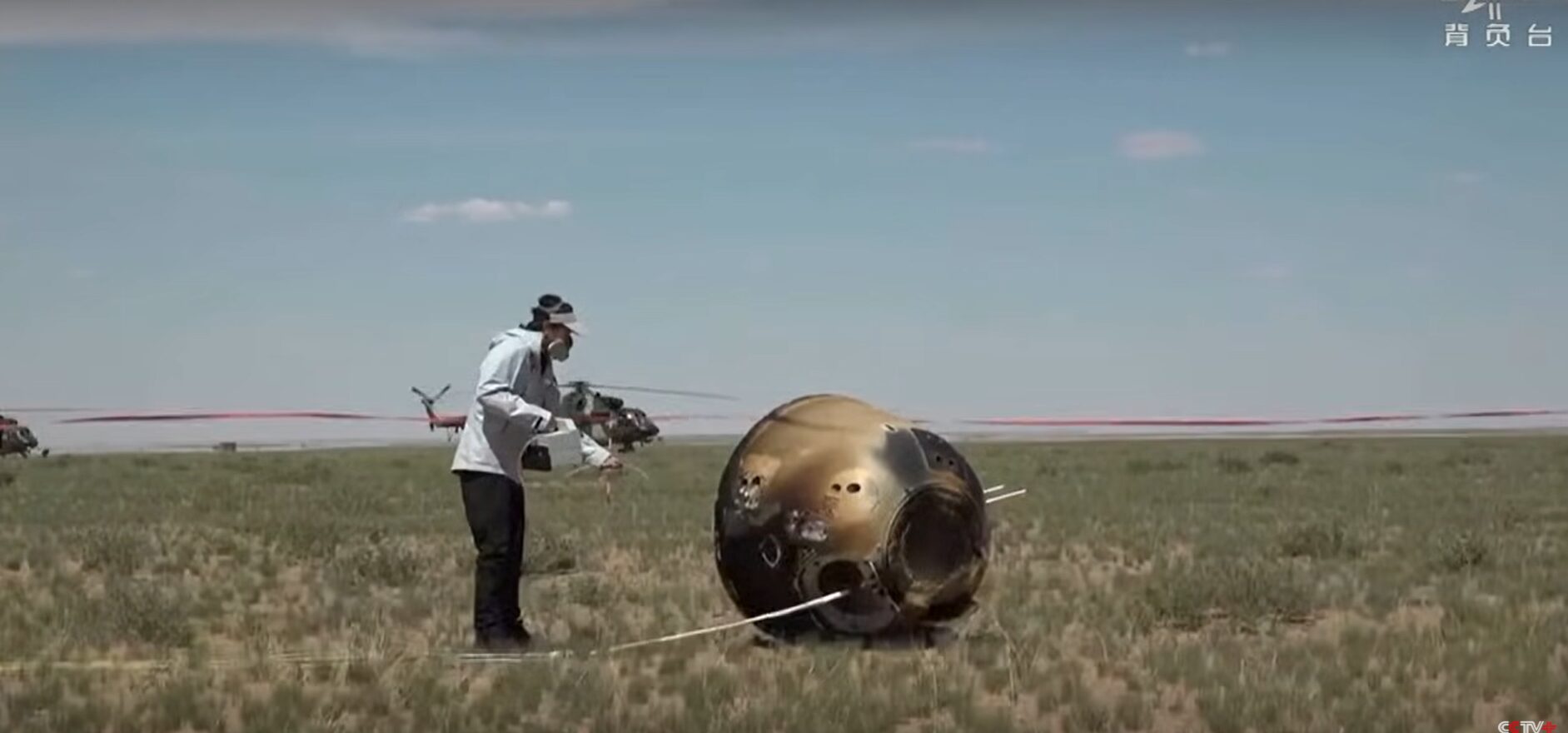
A radiation specialist assesses the payload to determine whether it’s safe. Photo: CCTV
What actually is the “dark” side of the Moon?
The Moon doesn’t orbit the Earth like the Earth orbits the Sun. Relative to the Sun, the Earth spins around its own axis every 24 hours, giving rise to day and night. But only one side of the Moon ever faces the Earth. The phases of the Moon depend on how much of the near side is exposed to sunlight.
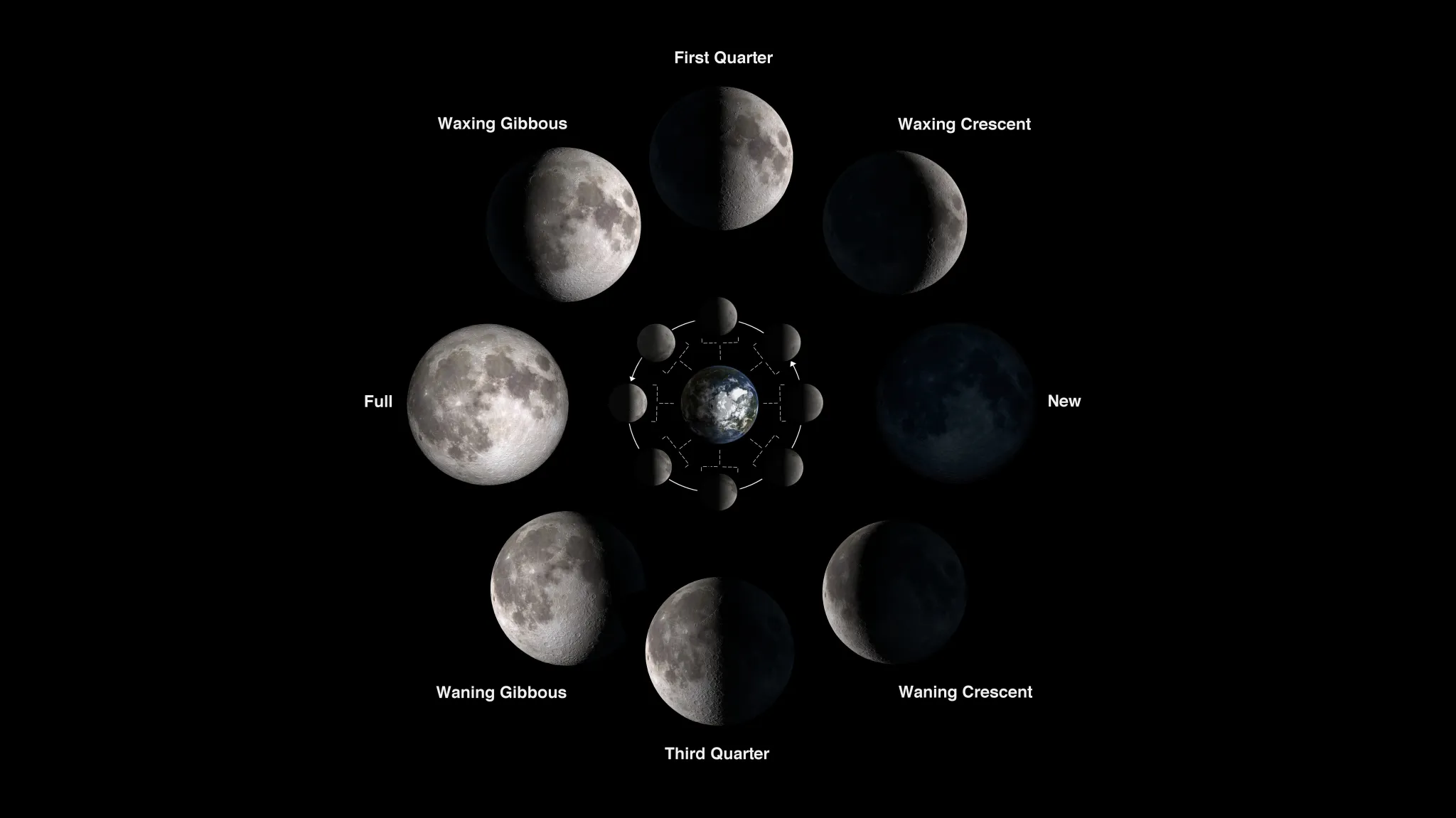
The phases of the Moon depend on how much of the near side is illuminated. Photo: NASA/Bill Dunford
We never see the far side. This doesn’t mean it’s actually dark — it gets about as much sunlight as the near side. But other processes create stark differences between the two sides.
Astronomers call orbits like the Moon’s, where one side of an orbiting body always faces the center, “tidally locked.” Tidal locking affects different parts of the locked object differently. For instance, since one side of the Moon is always closer to the Earth, it experiences a higher gravitational pull than the far side. This distortion stretches and chafes the mantle, or semi-molten middle layer. The frictional heat produced increases seismological and volcanic activity.
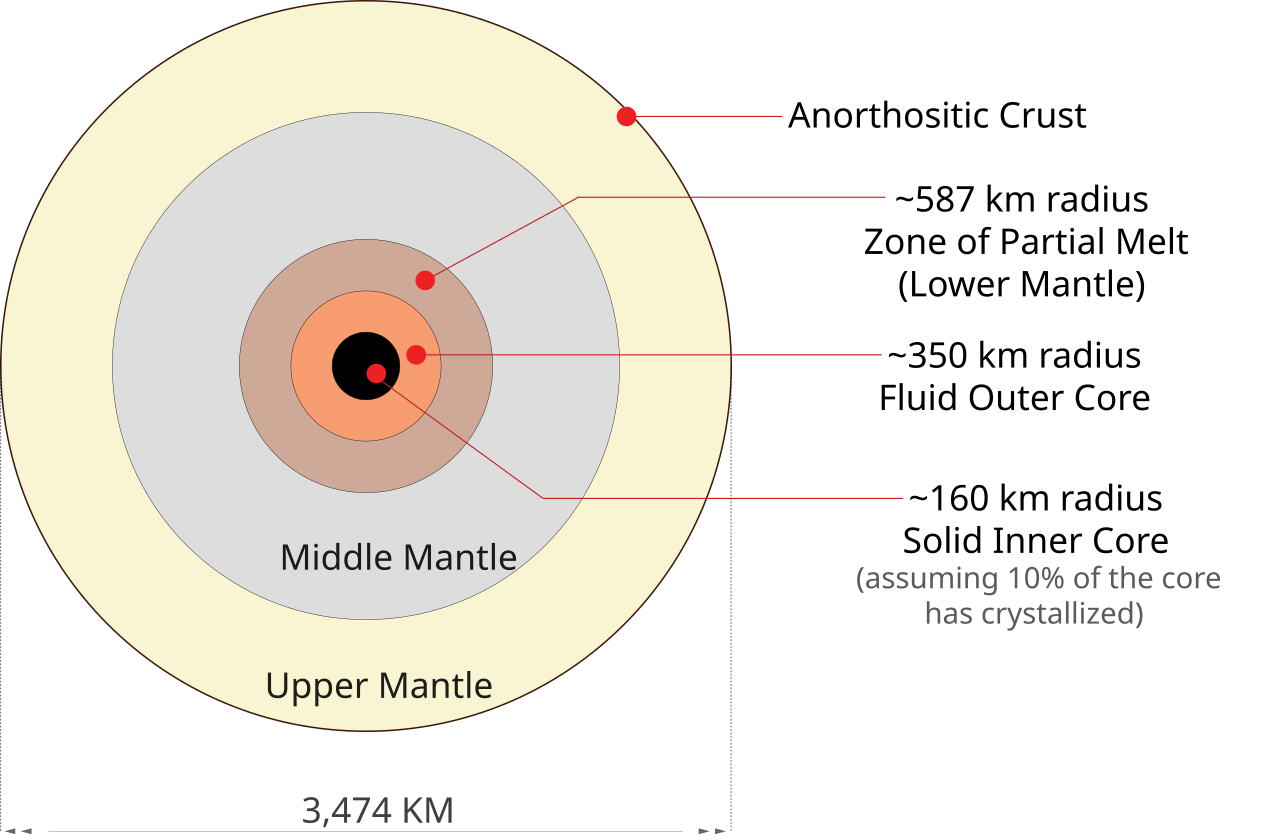
Diagram showing the layers of the moon. Photo: Wikimedia Commons
The tidal deformation of the Moon has caused the near side to be more volcanically active, with a thinner crust, and composed of different elements than the far side. The near side also received substantial radiation from the young, hot Earth during its formation, before both bodies cooled by hundreds of degrees. Because of this, the near side may have solidified much later than the far side.
How did the surface of the far side form?
The Moon is the best-studied extraterrestrial body in our universe, and planetary scientists know a lot about its far side. But even the best remote observations can’t compare to physical data. When the Apollo missions retrieved rock samples from the near side, geochemical analysis cast into doubt the long-held model of crust formation via the solidification of a magma ocean. Rather, the wildly varying ages of certain rocks suggested a more chaotic process.
Exactly what that process was continues to be a matter for debate. In April, researchers at the University of Arizona found that most of the original magma ocean may have sunk below the surface early in the Moon’s formation history. This magma then erupted on the near side in volcanic flows. But how old is the far side crust, and how did it form? The Chang’e 6 samples may reveal this history.
An ancient impact crater
The far side is interesting for another reason: the largest asteroid ever to hit the Moon slammed into it over four billion years ago. It left a massive impact crater called the South Pole-Aitken Basin. Despite this massive shock, volcanic activity was minimal. Unlike the volcanic, magma-scarred craters on the near side, the South Pole-Aitken basin preserves a near-perfect record of the initial impact.
Geological simulations suggest that because the near side of the Moon was hotter, asteroids sank deeper into the molten crust than on the solid far side, leaving less of a scar. That could be why the far side is littered with asteroid craters, even though both sides are equally susceptible to impacts. Since Chang’e 6 collected samples in the South Pole-Aitken Basin itself, analysis may confirm the sinking asteroid theory — or hint at something else.
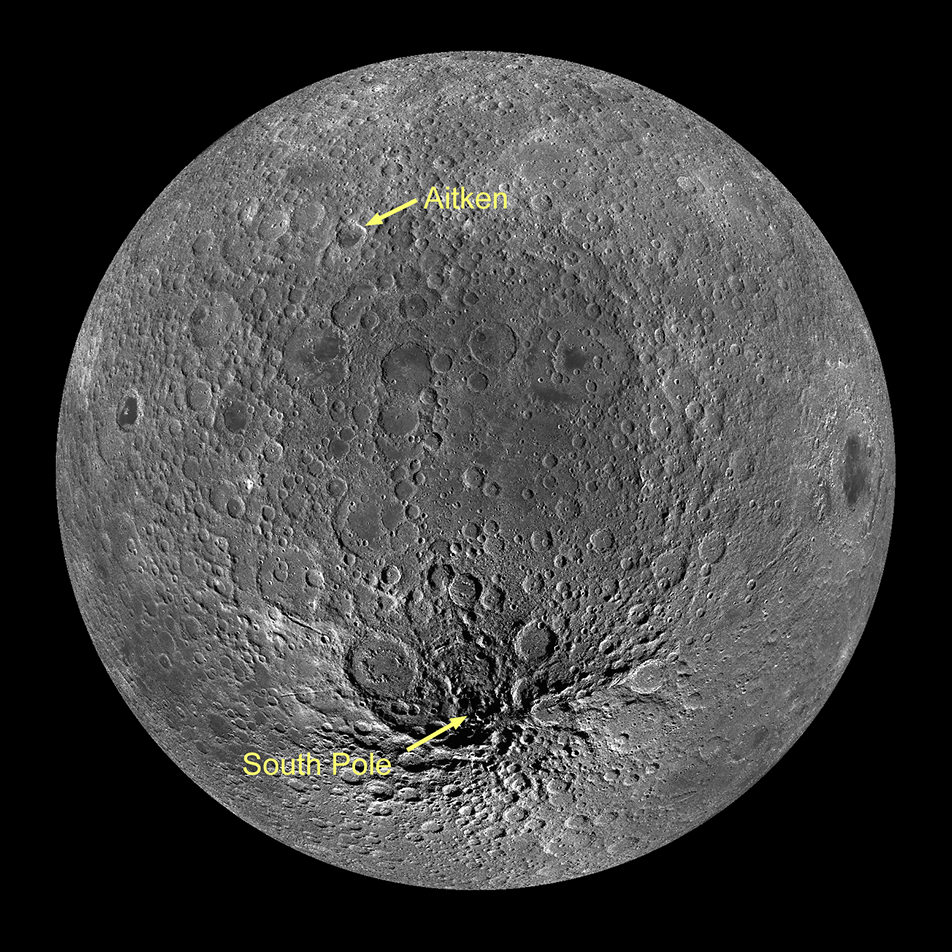
The South Pole-Aitken Basin is an ancient impact crater that extends from the Aitken Basin to the South Pole. Photo: NASA/GSFC/Arizona State University
The Moon tells the Earth’s history
The geology of the far side not only expands the story of the Moon’s formation but also offers clues about the conditions in the early Solar System and the Earth of 4 to 4.5 billion years ago.
The Moon probably formed when a protoplanet called Theia collided with the young Earth at tremendous speeds. Although Theia sank and merged with the Earth’s core, the impact shot debris from the surface of both Theia and the Earth into orbit. Over time, the debris coalesced into one body, the Moon, in the same way that the Earth formed from the material around the nascent Sun.

Simplification of the giant impact theory of lunar formation. Photo: By Citronade via Wikimedia Commons.
The highly active surface of the Earth and the effects of an oxygen-rich atmosphere have obscured the traces of its early history. Only a few massive craters remain to hint at asteroid impacts. The current crust is much younger than the Earth itself.
But we know from lunar observations that despite the scant geological record, asteroids constantly bombarded the young Earth, throwing debris into orbit and dredging up magma from deep in the mantle. Before the formation of an atmosphere, cosmic rays drenched the surface in ionizing radiation hundreds of times as intense as what we experience today. And the whole planet was so hot it could melt rock from tens of thousands of kilometers away.
Whatever Chang’e 6 reveals about the Moon, it will tell us something about our own home as well.
